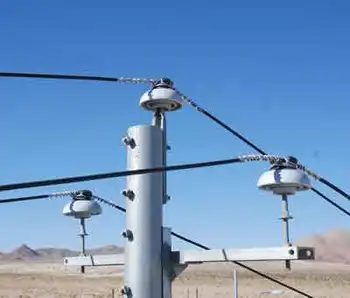Aiming for 100 per cent renewable energy
By Brian Ditcheck, Ipswich Chronicle
High Voltage Maintenance Training Online
Our customized live online or in‑person group training can be delivered to your staff at your location.

- Live Online
- 12 hours Instructor-led
- Group Training Available
After the installation in 2010, all who drive past our new wind turbine, will see a symbol of Ipswich's progressiveness and commitment to keeping our forests clean and our beautiful beaches intact. The fact that Ipswich residents approved the $4.2 million wind project by a four to one margin shows just how serious we are about making progress on renewable energy.
I agree that Ipswich residents should be proud of the commitment to renewable energy we have made, but is it really enough?
Ipswich consumes 110 million kilowatt hours of electric energy per year. When the wind turbine comes on board, it will generate 2.8 percent of that and eliminate 1,950 tons of carbon emissions annually. But that means the majority of the remaining 97.2 percent of our electric energy will still come from fossil fuels like oil, natural gas and coal and that will, each year, push another 70,000 tons of greenhouse gases into our air. Ipswich is also a participant in the Berkshire wind project, which, if or when successful, could remove another 2.7 percent of our fossil fuel needs and reduce that 70,000 tons by another 1,900 tons per year.
Five years will have passed between the first Ipswich wind feasibility project, conducted by Meridian Associates, and the expected installation date. If the town continues to implement renewable energy projects at this pace fossil fuels will continue to be burned for our electric energy needs through 2100 and, if all of the word's towns proceed this way, it will surely be too late. Somehow, we need to accelerate our renewable energy programs and achieve fossil fuel independence.
Most climate scientists would agree that failure to act more quickly and more aggressively to reduce greenhouse gas emissions will have very severe climactic consequences in the lives of our children and grandchildren born in this decade. The rate of increase of greenhouse gases is not just driven by population increases in the United States, but the rapid increases in the world's people, particularly in India, China, Russia and Brazil, going from a life of poverty and minimally using devices based on fossil fuels to a middle class existence consuming goods requiring electricity and gasoline. In the next 50 years, users of electric appliances and petroleum-based transportation will likely double, as another one billion people emerge from poverty.
Ipswich, like other coastal communities, would be first to feel the severe impact of global warming and consequent rises in sea level and for this reason Ipswich should take a leading role in committing to renewable energy. Ipswich should set the challenging but doable goal of using 100 percent renewable electric energy within five years.
That is a long way to go in a short period of time, but think of the possible benefits of pursuing such a strong, progressive goal. We would, as a single town, reduce the carbon dioxide emissions by about 70,000 tons. That is equivalent to taking about 12,000 cars off the road.
We would be giving a great gift to our children. Though we may be saddling them with a huge federal deficit, we would at least be acting responsibly by giving them a zero electric fuel cost to pay. With renewable energy, though the initial investment may be high, the cost of fuel is free.
If Ipswich achieves its goal of being 100 percent renewable in five years, our town would achieve national recognition for its forward thinking policies and become a beacon of hope for all towns.
Ipswich going renewable would reduce oil consumption and the country's overall dependence on foreign oil. This is more significant than it may sound. Dollars for foreign oil may be supporting terrorism, which we pay for both in the lives of American soldiers and the high cost of combating that terrorism. The best tactic in the war on terrorism would be simply to stop buying foreign oil. Terrorists without financial backing would be a seriously diminished threat.
Finally, economically, the time is right for renewable energy. If we act quickly, the Obama administration, a strong supporter of renewable energy, can be expected to support our funding for capital investments to make this happen. If we can quickly make more renewable energy projects "shovel ready," the overall cost to Ipswich residents would go down.
It is possible to go 100 percent renewable in five years if we make the commitment. We could quickly put up another wind turbine off Town Farm Road, we could add wind turbines to our lamp posts, as suggested by Deerpath Energy, we could buy wind energy from the Cape Wind project if that goes through, we could add solar panels to our roofs or buy more hydroelectric from Canada.
The town should evaluate options and commit to completing a study within six months. Can we do it for our beaches, our salt marshes and our forests? Can we do it for our homes, schools and businesses? Can we do it for our children and grandchildren? Yes, we can.











